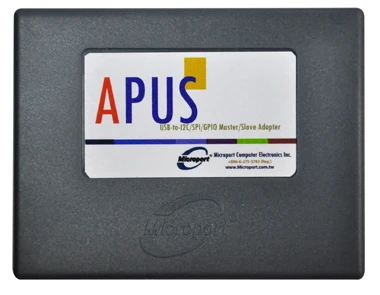APUS Part No:MPTP-I2C/SPI-APUS

|
APUS
Overview:
APUS is an interface adapter designed for controlling any test system incorporating I2C, SPI or general purpose IOs (GPIO). Today, usage of these protocols is extremely widespread including electronics for telecommunications, portable electronics and medical electronics to give some examples.
The host PC includes the necessary driver and DLL to implement the high level commands so that the user can rapidly develop his/her own custom applications. SPI Interface: I2C Interface: GPIO Interface: Analogue:
The API (Application Programming Interface) is designed for easy use in creating custom applications incorporating simple high level commands. Some examples of functions which can be called are shown over.
API:
For the complete API specification refer to the following link:
Examples
|


